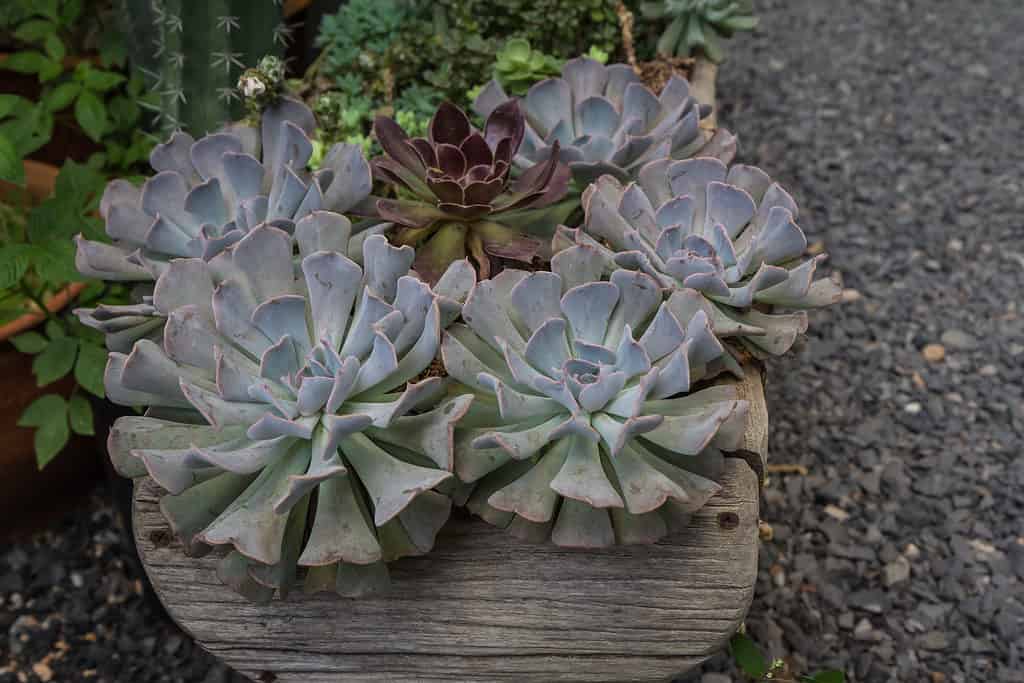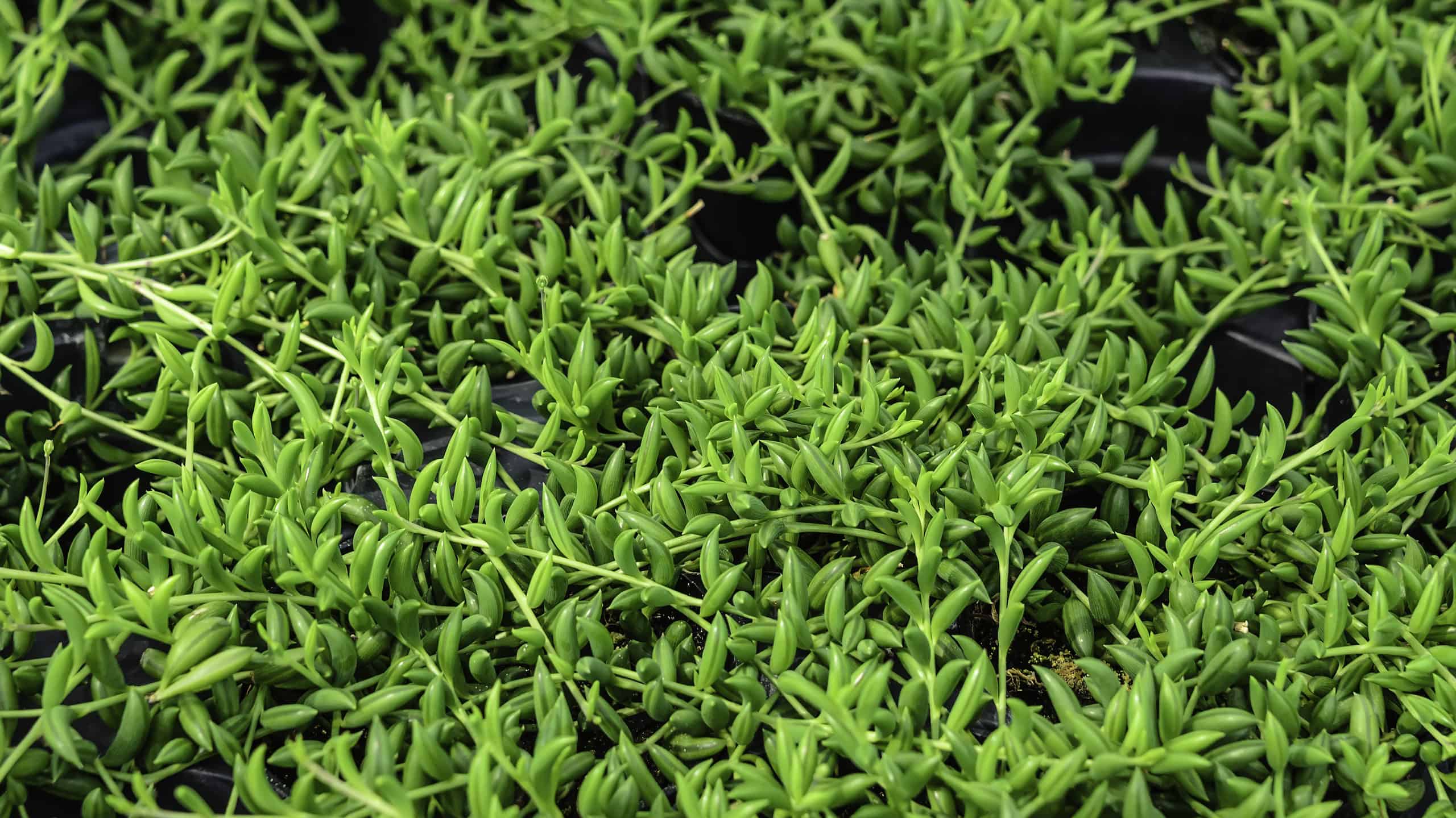Succulents are a popular indoor plant due to their low-maintenance nature and aesthetic qualities. Unfortunately, these sun-loving plants are mostly found in deserts and semi-tropical areas, making them unideal for outdoor growth. If you live in a temperate region, you’re in luck! Here are some practical tips for how to care for succulents outdoors and some points to help you decide if your succulents can survive outside.
Considerations for Caring for Succulents Outdoors
There are several considerations when determining whether your succulents will survive outdoors, including the following ones.
Climate and Weather
Succulents are hardy plants with a wide range of USDA zones. Believe it or not, a few succulents even have what it takes to survive a Canadian winter. Some Sedum and Sempervivum can survive in USDA Zone 4-6, which encompasses the Northern USA and Southern Canada. The temperature threshold is (-20 to -15°F/-29 to -26°C). Even so, frost protection is recommended.
Most succulents are considered “soft” succulents and prefer to be in USDA zone 10 or higher — i.e., the Southern United States or below latitude line 32. A few varieties will survive outdoors in USDA zones 7-9, but it’s not typical.
Another weather concern is excessive rain. While a little rain is good for your outdoor succulents, extended rainy seasons can lead to root rot. If you live where it tends to rain for days on end, reconsider your succulent outdoor plans.
Sun Exposure
To thrive, succulents need 6-8 hours of bright, indirect sunlight daily. While they can survive on less, this amount is optimal for growth.
If you lack access to a sunny spot outdoors — for example, you have a covered North-facing balcony in an apartment building — your succulents may not get sufficient lighting. Keeping your succulents indoors in a sunny room may be more effective.
Conversely, direct, overhead sun exposure can also damage your succulents. Ideally, you’ll have a space to shade your succulents during peak daylight hours. If your succulents are planted in the ground, adding an awning or pergola overtop can provide sufficient protection without stifling their growth.
Soil and Drainage
One of the benefits of planting a succulent outdoors is the improved drainage from having the ground absorb moisture rather than the limitations of a pot.
However, ensuring the soil is well-draining and succulent-friendly is a must. Mix in sand or perlite in the bed where you’re planting your succulents and pair them with other drought-tolerant plants that prefer drainage — lavender or rosemary, for example.
Planting your succulents on high ground rather than in an area where water accumulates is also recommended.

One of the benefits of planting a succulent outdoors is the improved drainage from having the ground to absorb moisture
©Sunflow Studio/Shutterstock.com
Planter and Pot Options
If you don’t have the right climate, soil, or sun exposure to help your succulents thrive outdoors, consider planting them in an outdoor pot. This option allows you to take them indoors or move them around to protect them from the elements.
Your indoor succulents may also enjoy some time outdoors during the nicer months. Gradually expose your succulents to the elements to prevent sunburn or shock.
Tips for Caring for Outdoor Succulents
Caring for outdoor succulents is very similar to caring for indoor succulents.
As with indoor succulents, let the soil around your plants dry completely before watering. Pay attention to the weather and adjust your watering frequency accordingly. Water more often during drought periods and less often during wet and dormant periods.
Trim and prune your succulents regularly to remove dead or dying leaves. It’s also wise to trim plants around them to ensure the shade from larger plants isn’t impeding their sun exposure.
Outdoor succulents don’t typically require the same fertilization as indoor succulents, as they can draw nutrients from the soil. If you notice your succulents lagging or you use outdoor pots, consider fertilizing them with a slow-release, succulent-friendly fertilizer during the spring and summer.
Keep an eye out for pests and wipe them away as needed, using neem oil as a natural deterrent. You can also use Diatomaceous earth to deter slugs, aphids, and other outdoor pests from attacking your precious plants.

As with indoor succulents, let the soil around your plants dry completely before watering.
©De19/Shutterstock.com
How to Care for Succulents Outdoors in Winter
Winterizing your succulents is essential if you have hardy succulents or live in a cooler area.
Add mulch around the base of your succulents to help protect the roots, then cover them with burlap when there’s a risk of frost. Be sure to secure the burlap covers so they don’t blow away in the winter winds.
Succulents require less water during the winter, which is typically their dormant period. Only water the soil if it’s completely dry up to the second knuckle when you press into the dirt. Otherwise, leave them be.
Potted succulents should always be moved indoors during the winter months.

Potted succulents should always be moved indoors during the winter months.
©Wirestock Creators/Shutterstock.com
Thank you for reading! Have some feedback for us? Contact the AZ Animals editorial team.








